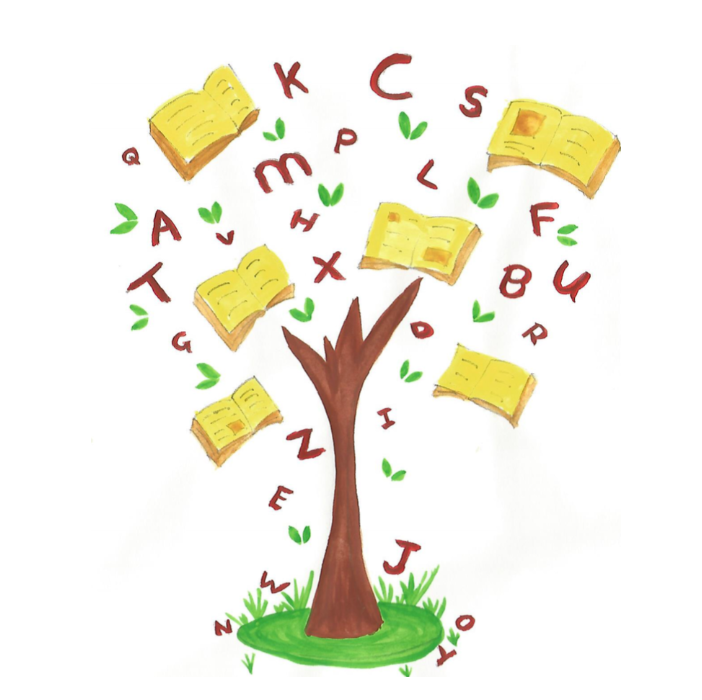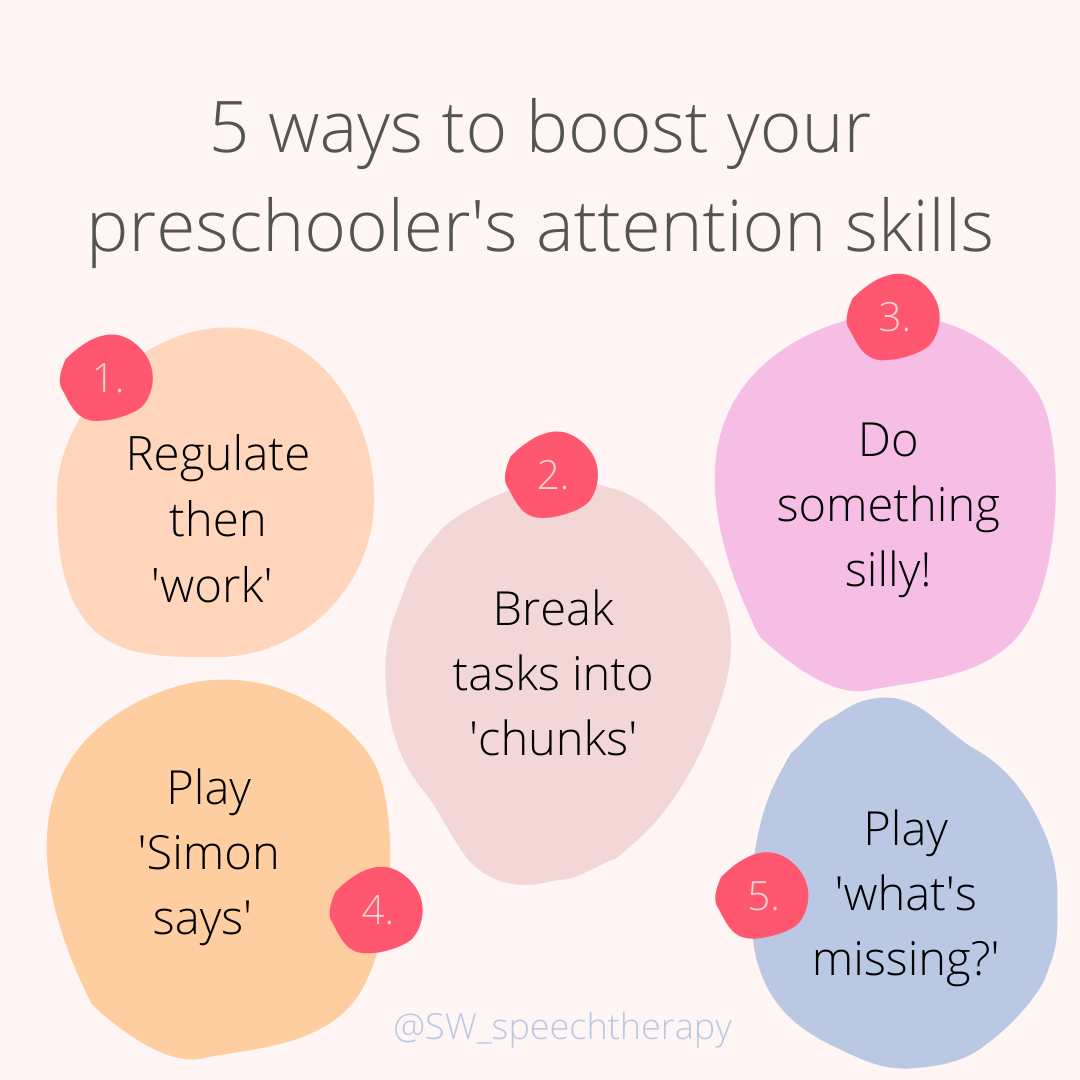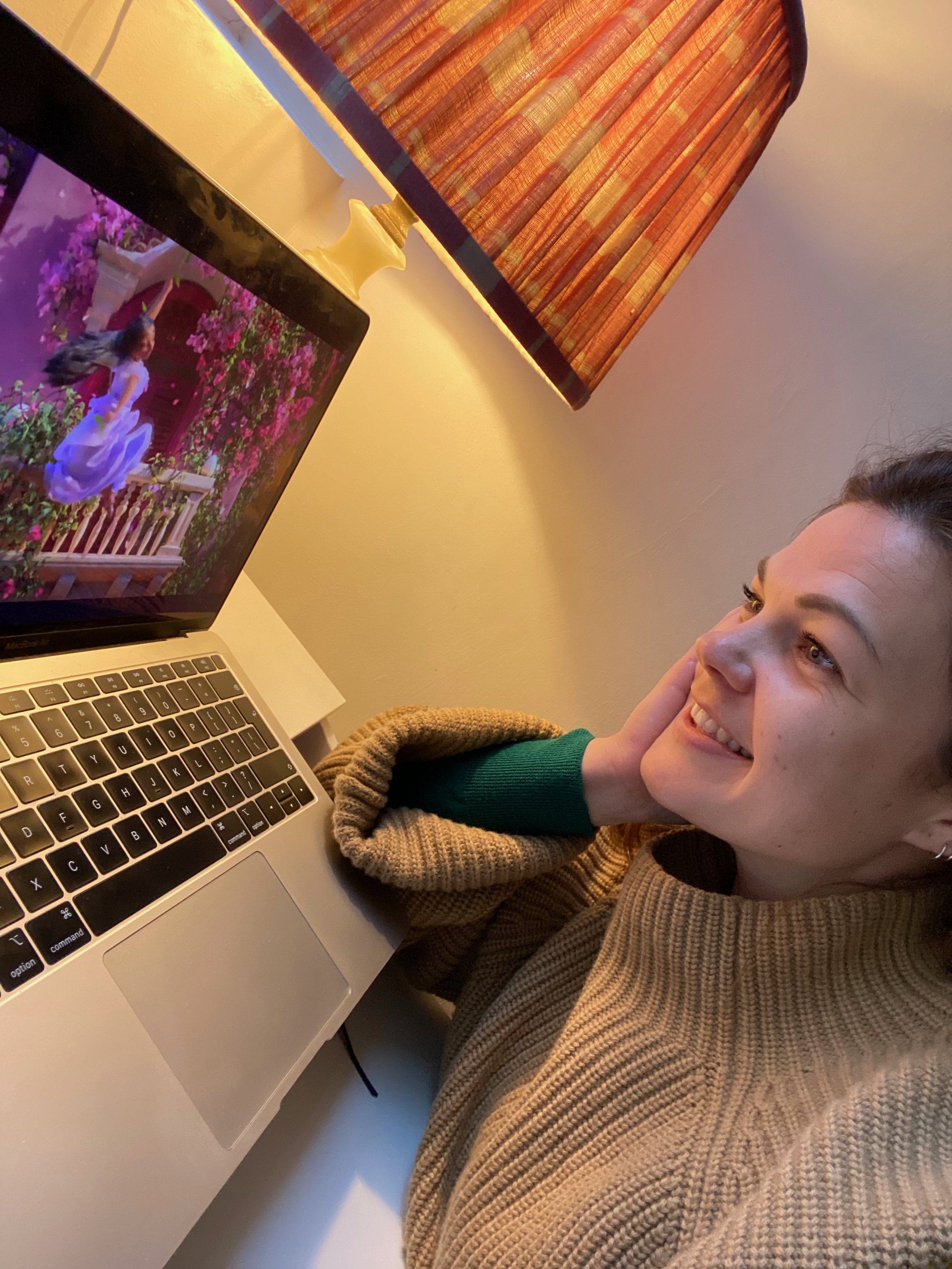Want to help your little one with speech delay? Start here…
Knowing where to start if your little one is struggling with their understanding or talking.
There are so many components that make up an effective communication which can make it hard to know where to start. If your little one is finding talking or understanding tricky, then a good place to start is attention skills, here’s why…
The Communication Tree (Communication Pyramid)
As you can see there are so many elements that contribute to effective communication. Attention and listening skills are the roots/ foundations of communication. Talking and speech sounds are the final components (the leaves).
If you want to learn more about the difference between speech and language skills - check out this blog post.
Why work on attention if my child’s “issue” is with talking?
You can get other skills ‘for free’.
By working on attention skills we often see progress in other skills higher up the tree ‘for free’ (i.e. without actively working on them). This is because attention skills are foundation skills for all other elements of communication.
Speech & language activities require good attention.
When working on speech sounds or language skills with little ones we require them focus for extended periods of time. The activities to develop these skills require good attention and listening skills. That’s not to say that we can’t work on these areas of communication if little ones struggle with their attention, but that they will be able to get the most from the activities if their attention skills are as strong as possible. So it is worthwhile spending the time developing these skills to get little ones in the best place possible to access the activities.
Top tips to make transitions easier for your preschooler.
How to help your little one avoid a meltdown when they are transitioning between activities.
“My little one really struggles with transitions, do you have any tips?” Parent via sw_speechtherapy instagram page.
This is a question I get asked all the time! You are not alone. So many children struggle with transitions, I would even say adults struggle with transitions!
For the most part we can understand why. You’re minding your own business watching Encanto for the 487th time (tell me it’s not just me) and suddenly it comes to and end and you have to do something boring instead. It makes sense that your little one would do all in their power to stop that from happening.
Whilst there are times when your little one can choose exactly what happens in their day, the reality of life is that we don’t get to dictate everything that happens and we need to prep little ones for this.
Why are transitions hard for children with communication differences?
We will dive into the “what to do about it” in a moment but first I want to highlight the main reasons that transitions are challenging. The support we put in place will differ depending on the reason the transition is tricky.
I don’t understand what is happening.
I like familiarity and ‘sameness’.
I don’t want my favourite thing to end.
I am unwell/ something else is going on.
It is likely your little one may be struggling with transitions for multiple reasons, if you aren’t sure which one it is - then assume it’s all of them and work through the strategies below. The main thing to know is that, whenever possible we want to be proactive as opposed to reactive. We want to try and prep before hand to reduce the likelihood of the difficulty occurring.
I don’t understand what is happening
It makes sense that little ones have a meltdown if they don’t understand what is happening. They feel scared and unsure, and understandably want to stick with what they know. Here’s what you can do to support your little one:
Use visual supports to supplement your language and make it clearer what you mean:
Give a warning when something is finishing and set a timer to give a visual clue.
Now-next boards to show what your little one is currently doing and what is coming up next.
Show photos on your phone of what’s coming next. This is a low-prep easy way to show children what to expect.
Be consistent. This one is really, really hard. But if we say we are going to do something we need to do it. Even if it’s inconvenient! If understanding is tricky we need to show children what words mean by our actions. If when we say “we will go to the park” but then we don’t, how can we expect them to learn the work “park”.
I like ‘sameness’
Let me say at the start, if this one rings true for your little one then the road to easy transitions can be a bit longer. It is however, so worth it.
I also want to state that of course little ones are allowed to have preferences and favourites. This strategy is not about abolishing that, but about enabling them to cope with change and variety and seeing it as fun not scary.
Here’s what you can do if your little one has a strong preference for familiarity & sameness:
Gently introduce some small changes into their daily routine
If they love bubbles, buy a different coloured bubble wand and use that occasionally.
Play a short clip (5-30 seconds) of a new episode of their favourite TV show before switching to their fave.
Change the colour of the laces on your shoes.
Introduce a new bath toy with no pressure for them to play with it, but just have it in the bath.
Increase the number of small changes that you are exposing your little one to, try to make some of the changes a really positive change (e.g. make the bubble wand a wand which blows multiple bubbles, make the bath toy a character they really like), and some of them a neutral change (e.g. changing the colour of something).
Over time slowly increase the number of small changes you are making or the importance of the changes (this needs to be built up over time) e.g. take a slightly different route to nursery, toy rotation, draw some chalk shapes on the patio, give them their lunch on a different plate.
These strategies will not instantly change your little one’s ability to cope with transitions but what you are doing is building stamina and resilience to change which ultimately is what a transition is.
I don’t want it to end!
Another one I think we can all relate to! I can certainly! This may be your little one if you have tried the timer strategy and it doesn’t make a difference - it’s not the lack of understanding that’s causing the issue it’s the fact that something really fun is ending.
If this is the case, here’s what you can do:
Have an exit strategy! This is something I talk about in my parent training course where I ask parents to create a super fun engaging ‘box’ for their child full of toys they love. We know that when it is time to put it away it’s going to be hard. So plan ahead and have an exit strategy.
Have their fave snack ready to go as soon as their preferred activity ends.
Transition to another preferred activity.
Use a transition tool. To make the action of transitioning easier can you use a game/ video/ app/ tool during the transition (it is really important that you introduce the tool just before the transition & any associated protest starts).
Watching a video while they move from one thing to the next.
Blowing bubbles while they walk to the next activity.
I’m unwell/something else is going on
This one is likely to be the case if there has been a change in your little one. If they previously were fine with transitions but suddenly it’s hard. Here’s what to do if you notice a sudden shift:
General check, do they have a temperature? Can you see a rash? Are there other signs they may be ill? Consider calling your GP.
Make notes - record when the changes occurred and what they look like. Include any other differences you notice.
Gather information - has anyone else noticed any changes in your little one? What have nursery noticed?
I hope these tips have been helpful, for more advice, tips and tricks follow me on instagram @sw_speechtherapy or sign up to my monthly newsletter!
Some links are affiliate links which means if you choose to purchase an item using that link I will earn a small commission.
Toys to help your preschooler talk
Toys to help toddlers get talking
What to look for when choosing toys for your 2 or 3 year old to develop their communication skills?
When pre-schoolers are struggling to communicate, we are desperate for that magic bullet which will make things easier for them and bring on their talking.
The reality is no, one, toy is going to develop your toddler's speech and language skills alone, (and you should be wary of any toy that claims it can!).
It is much more about what you do with the toy, how you play with the toy than the toy itself.
That being said, here are my 4 golden rules that I follow when choosing toys for little ones who find communication a little tricky.
Toys that need you to operate.
Toys that can be played with in multiple ways.
Toys that have lots of parts, so can be shared bit-by-bit.
Whatever your little one loves!
Don’t worry if the toys you just bought on the weekend don’t follow all these rules. I recommend that rule number 4 is a must when picking toys for little ones! But besides that just be mindful of some of the others.
Here’s why…
Toys that need you to operate them are great as they create a shared moment.
If little ones can play totally independently it can be difficult for us to become a part of their world, but if we are needed it gives us an easy in!
I’m talking wind-up toys, balloon powered cars, toys that need bigger, stronger hands to operate.
The toys that can be played with in lots of ways are great for keeping play interesting and to allow you to model a variety of words.
When children find speaking hard, we want to model language for them based on what they are doing.
If we are playing in a variety of different ways then we can model lots of different language.
For this rule, things like carboard boxes, open-ended sensory bins and Duplo are brilliant!.
Toys that can be shared bit-by-bit, keep the play exciting and provide opportunities to work on requesting and turn taking. I’m talking about puzzles, train tracks, marble runs – most ‘construction’ type toys follow this rule.
Finally, children learn best when they're having fun - so choose a toy your child loves!
If you are looking for more toy inspiration follow me on Instagram @sw_speechtherapy where I share the toys I have in my therapy kit, strategies, and milestones to help you understand where your pre-schooler is at, and how to help them become a confident communicator.
*Some links are affiliate links, which means if you click through and purchase I will earn a small commission













